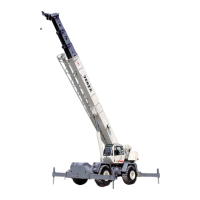gland into place using a wood block and hammer. In this event, cover the rod with rags or a
rubber tube to prevent damage from a glancing hammer blow. The head gland is then spun
in and tightened.
NOTE: Apply Loctite Gr. 242 to piston retaining rings at assembly. Also apply to
locking setscrews.
On cylinder, preset nylon plug with a 25 ft. lb. torque, using a Grade 8 cap screw, and
install setscrew and setscrew and torque to 15 ft. lbs, three (3) places.
HYDRAULIC CYLINDER OPERATION
As soon as the cylinder is ready to be placed in operation, it should be slowly cycled under
no load conditions for several minutes in order to allow the entrapped air within the cylinder
to escape to the reservoir and, also facilitate the reforming of the seals which may have
temporarily deformed during shipping, storage, or reassembly.
New cylinders may show a slight “drifting” tendency when first used. This is natural, due to
one or both of the following causes:
1. Air entrapped in the oil.
2. Seals not yet fully reformed or seated.
“Drifting” should decrease with operation as piston rings and seals “break in” to provide
better sealing and the eventual escaping of the trapped air in the oil.
277
REVISED:

